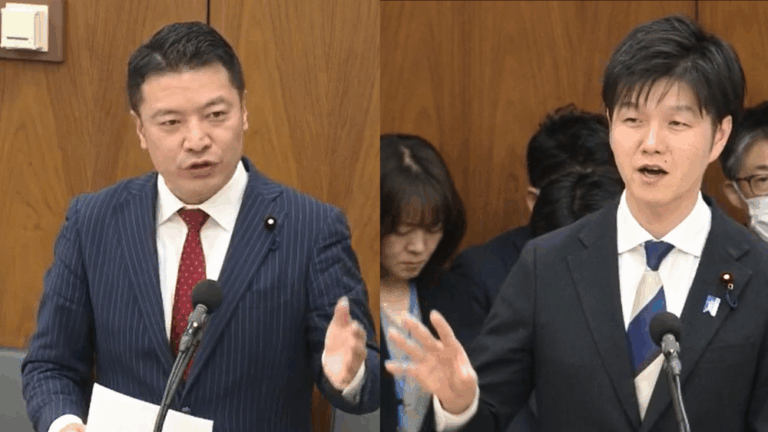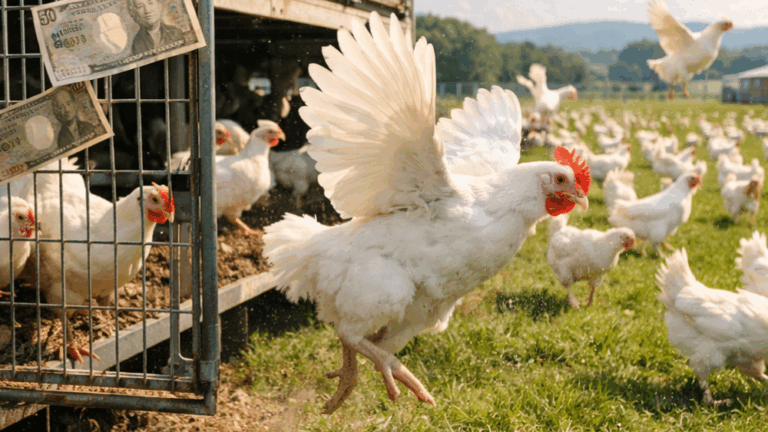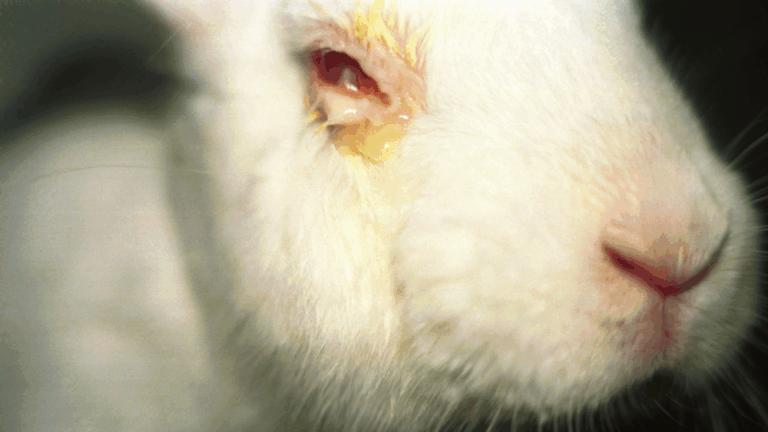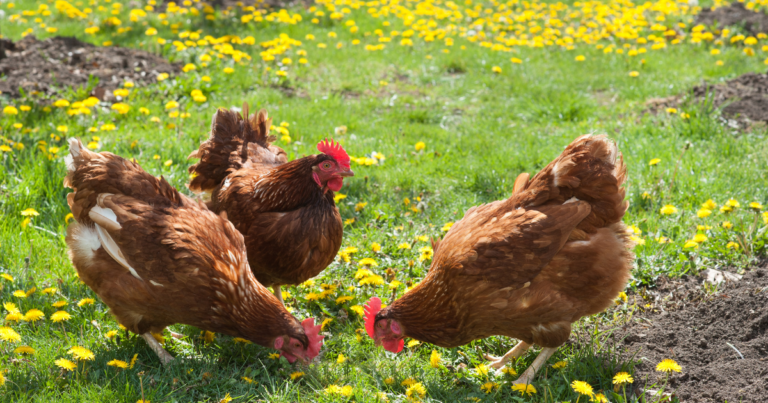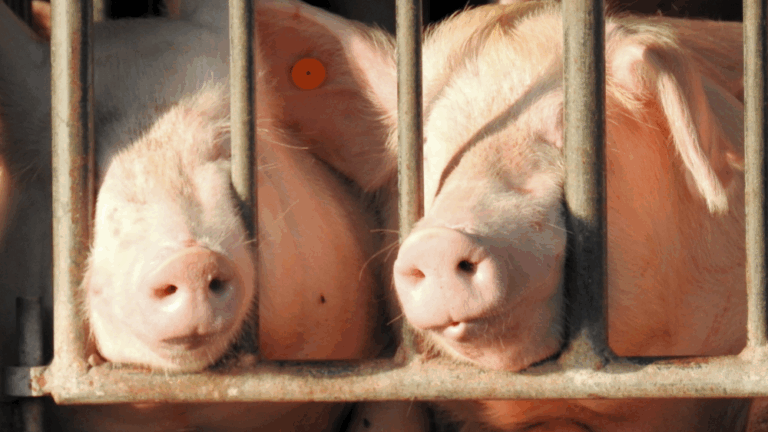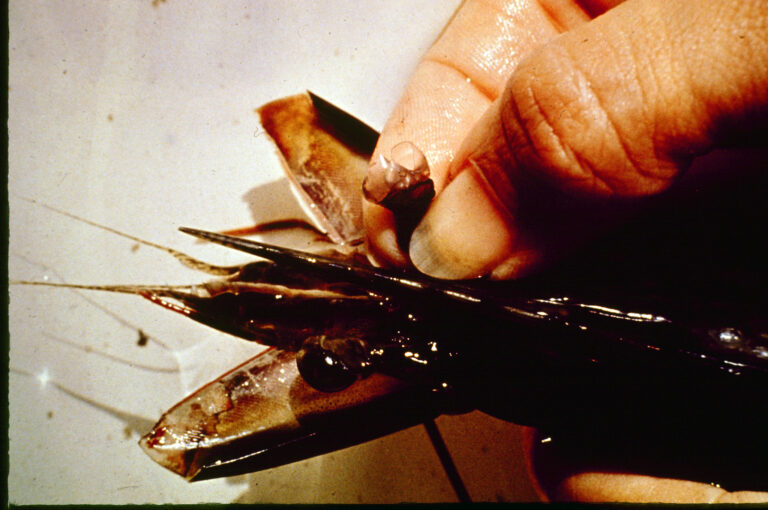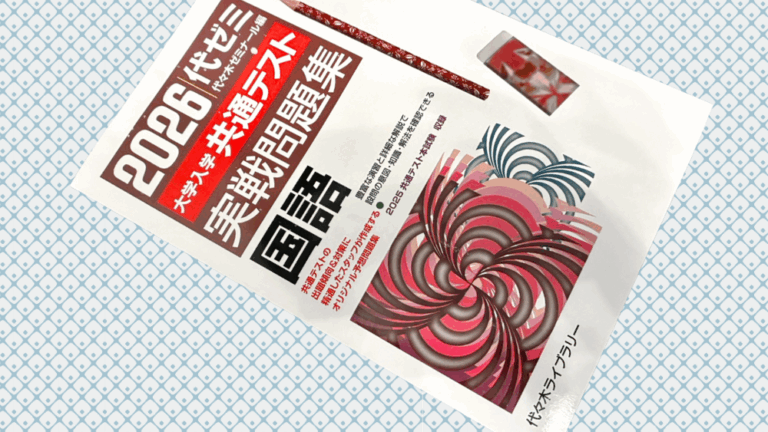The Act on Welfare and Management of Animals stipulates, as a penalty, that to drain or weaken an animal by raising it or to keep it in a place where the density of breeding is clearly insufficient. However this regulation is not functioning and abnormally overcrowded rearing is rampant across Japan. While meat chicken farms are also extremely crowded compared to global standards, on this article we will explain the abnormal breeding environment of laying hens in Japan.
Rearing density of Japan’s layer poultry farms
The rearing densty practiced in Japan’s largest egg producer, (which went bankrupt and filed for corporate reorganization in 2022), is 285cm2 per bird. It’s 15cm×19cm. The size of a hen is not that small, which means hens are given less space than their size.
Another producer told the media, it’s 360 cm2 per bird, but it’s still smaller than the size of a hen.
As a matter of course,hens cannot act naturally at all, and they will continue to bump into the cages or other hens.
Take a look at the picture below showing the state.
These hens live in a space of 285cm2 per bird.

There is no space. They are crammed together and spend 24 hours, 400 days to 600 days, and do nothing but feed, defecate and sleep without getting out of the cage even once. 8 birds are squeezed in this cage.
The picture below is the same farm as above, but 9 birds forced to live in. All hens are apparently worn out because they have been in cages longer than in the picture above. Even eight birds have made the cage so wrapped, adding another must put them under considerable stress and physical effects.
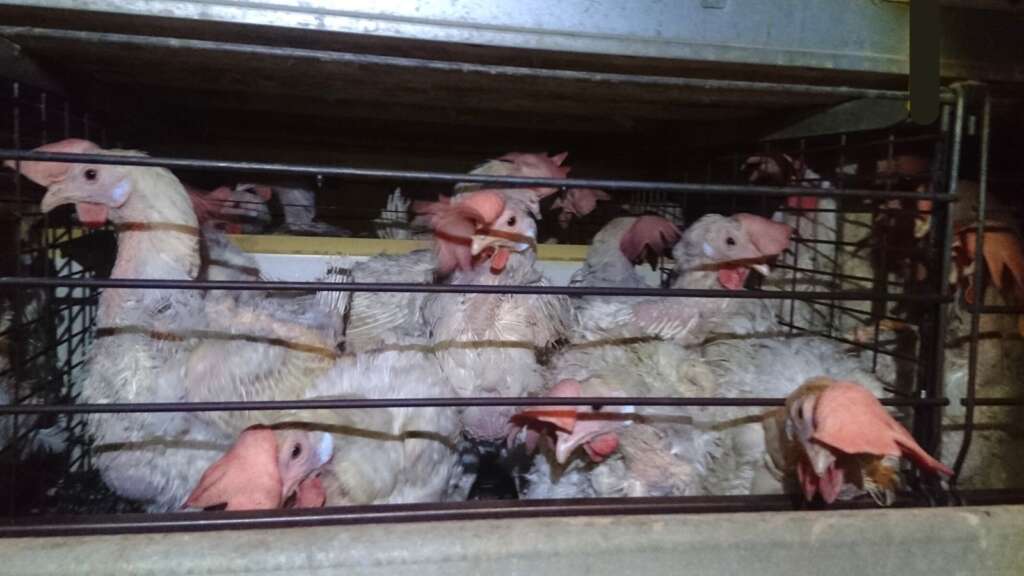
What are the conditions of the other farms? The picture below also shows windowless cages. Many farms generally have 4-5 birds in a cage of this size, but this farm packs 8 birds in a cage. Weak hens had difficulty getting out of her face among the others. Their cockscomb had turned pale pink while the crest of the weakest hens in the cage, lost its color, becoming white or even ochre.
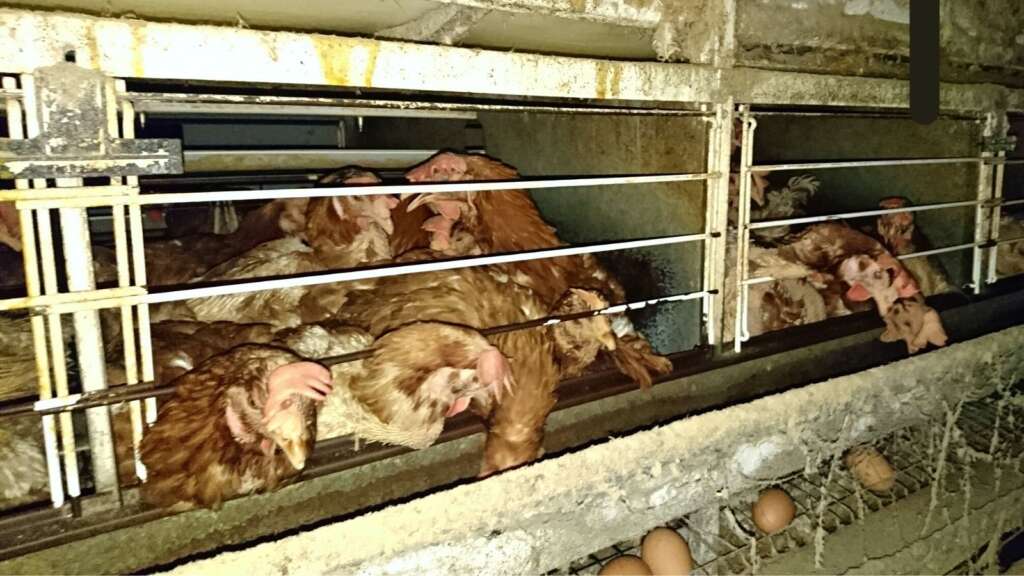
In another example on other farms, it’s an open house, so there’s natural daylight. However, these cages are usually partitioned the space as narrow as possible just for 1 or 2 birds, squeezing them into the same size of their bodies.
When feeding, one of them must move backwards, but it is not possible to change back and forth without stepping on another’s body.You certainly wouldn’t want to spend even 24 hours in this state.
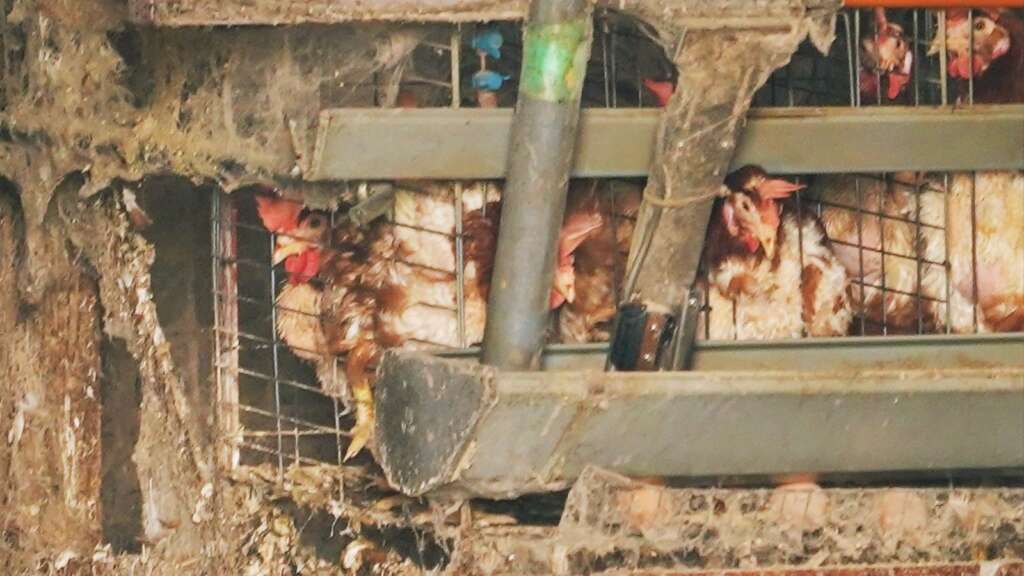
Farms like below introduce a little bit larger cage. Although there are some farms run by Co-op whose cages have windows and are widened the space for each bird, nevertheless, those hens can’t stretch thier wings while it should be inappropriate to keep the social animals individually.

In Japan, it’s producers themselves who can decide how much space per bird a cage should take
The Act on Welfare and Management of Animals is the only law in Japan that is meant to protect farm animals in general. However, the law doesn’t have any specific claus related to farm animals. Compared to, for instance, dogs or cats, there’s no regulation on the minimum requirement for the space keeping farm animals. South Korea as well as Western countries properly does have it.
In Japan, it’s farm owners who decide that how much space a hen should be allocated. When an owner is indifferent to animals’ suffering and only interested in profits without taking animals into consideration, the farm becomes like pictures above. It’s really deplorable that owners of most poultry farms in Japan should cram hens into a cage smaller than half the size of the other countries’. That being the case, a cage in Japan is not the same as the others’, with its quality being far worse.
In contrast to the world standards of the rearing densty, aberrant Japan’s way
How much space hens are allocated in other countries?
We’ll be focusing on the size of a cage.
Animal protection organizations around the world always say: “A chiken is forced to live in a cage that is just the size of A4.” A4 is equivalent to 623.7cm2. It’s rather much larger compared to a Japan’s rearing space. In fact, it’s more than twice as large as a cage in Japan’s top producer’s farm
The EU will be banning cage rearing in 2027 while 750cm2 must be kept as it stands under the existing rules.
It’s the same minimum requierment in South Korea. Any newly opened farms must comply with this regulation, and moreover, it’ll be applied to every existing farm by Aug. 31 2025.
These are twice as large as a common cage in Japan.
Oregon state, the US has banned the construction of battery cages since 2012 and will completely ban cage rearing and the trade of eggs from hens kept in cages in 2024 while cages constructed after 2012 must keep 750cm2 or larger under the existing rules. According to the previous regulation, cages constructed after 2004 must have kept 430cm2 or larger(white leghorn), 490cm2 or larger(brown layer hens) respectively. This was likely larger than the Japan’s current common rearing space.
It’s time for us to recognize that the way of producing eggs in Japan is inappropriate. Every time animal rights protection organizations around the world reveal the images proving that cage rearing is incredibly cruel, we, an animal rights protection organization, ARCJ will have a sense of hopeless since hens in that images are given larger space than our’s. Cage rearing is by all means cruel. Even though a bit larger space is given, hens are assessed they are suffering so cruelly that they’d rather die if they were able to choose to do so. But nevertheless, we wish they could at least be given the same large space as the world standards.
The ambiguity of the Japanese government is standing in the way
The rearing management guideline of Japan Livestock Technology Association says “③According to the overseas knowledge and the rest examining mortality rate, a rearing space of 430-555 cm2 is recommended per hen. Nevertheless, the rearing space required varies depending on the breed of hen, the structure of the poultry houses, ventilation, the type of the cages, the number of the hens. Therefore, it’s difficult to assess what proper standard should be, but the important thing is that managers and handlers should carefully observe hens and then decide whether the rearing space is proper or not. An overcrowded rearing spce causes hens stresses, feather pecking, increase in mortality rate, decline in productivity. By contarast, it’s known extra spaces cause hens to feather peck as well.”
It’s inconceivable and intentionally misleading that “430-555 cm2 is recommended per hen” is the current world trend. Least of all have most poultry farms in Japan achieved even this recommendation. There’s a bleak prospect being felt.
According to “the Guidelines concerning layer hens rearing management(draft)” now being prepared by the Ministry of Agriculture, Forestry and Fisheries, it just says “An overcrowded rearing spce causes hens stresses, feather pecking, increase in mortality rate, decline in productivity. By contarast, it’s known extra spaces cause hens to feather peck as well. The rearing space required varies depending on the breed of hen, the structure of the poultry houses, ventilation, the type of the cages, the number of the hens.” It’s unclear the extent to which this extra space is. This reads as if feather pecking occurs when hens are given large space. It’s clear falsification.
Additionally, there are plenty of studies on why feather pecking occurs or how it can be prevented. It would be a lot more useful for producers if the guidelines show the prevention and control of it along with the evidence without just concluding like that.
Feather pecking is clearly related to conditions where hens have difficulty in coping with environmental stressors; feather pecking can be reduced when hens can perform sufficient foraging behavior and are provided with sufficient fibres in the diet; feather pecking are influenced by early access to litter (wood shavings, in one case with additional straw) substrate and can be reduced when chicks have access to it; hens having spent in a cage as they were chiks likely show more feather pecking. You can search these examples if you’re interested in, though you can’t conceivably find any researchers in the world who absurdly suggest introducing a smaller cage in order to prevent feather pecking.
Larger rearing spaces will cause lower productivity, running impossible??
Producers insist that widen the rearing space makes them less profitable, though this is also incorrect.
True, should a rearing space be widened to the world standards 750cm2 without changing the system of the cage rearing, the number of the birds able to be kept in that space would lilely be reduced compared to the same cage-rearing space. But when a farm having 1 or 2 stacked cages is converted into cage-free rearing, productivity can be kept as it should be. Cage rearing will always have passages which enable a handler to pass along the cages. As a matter of fact, these passages occupy a great deal of its spaces. Since cage-free rearing doesn’t require these, a farm with 1 or 2 stacked cages could widen the rearing space without reducing the number of its hens while those eggs produced could sell at a value-added price.
Farms depeloped extensively with 6 or even 9 stacked cages are out of questiion. They’ve been greedy to the extent that they simply have to take animals into consideration and pay for the cost of it. Given they’ve been showing no concern over animals, it should cost them now and rightly so, to be sure, but we, consumers having been enjoying the cheap price at the expense of animals’ well-being should bear a burden of those responsibilities as well.
Why Japan’s efforts to protect farm animals is ranked the lowest? Obviously because it’s been deficient in consideration for animals.
It’s time that companies should reconsider the eggs produced in the Japan’s rearing system.
Additionally, it’s vital that even cage-free rearing should follow the regulations on rearing spaces, which a lot of countries have but Japan doesn’t, indicating that we can’t take Japan’s producers at their words whether those eggs come from cage rearing or cage-free rearing. Only there are numerous free range or pastured poultry farms having the own rules of proper rearing spaces and making them known, and there are companies buying the eggs from those farms. We should give priority on those eggs.
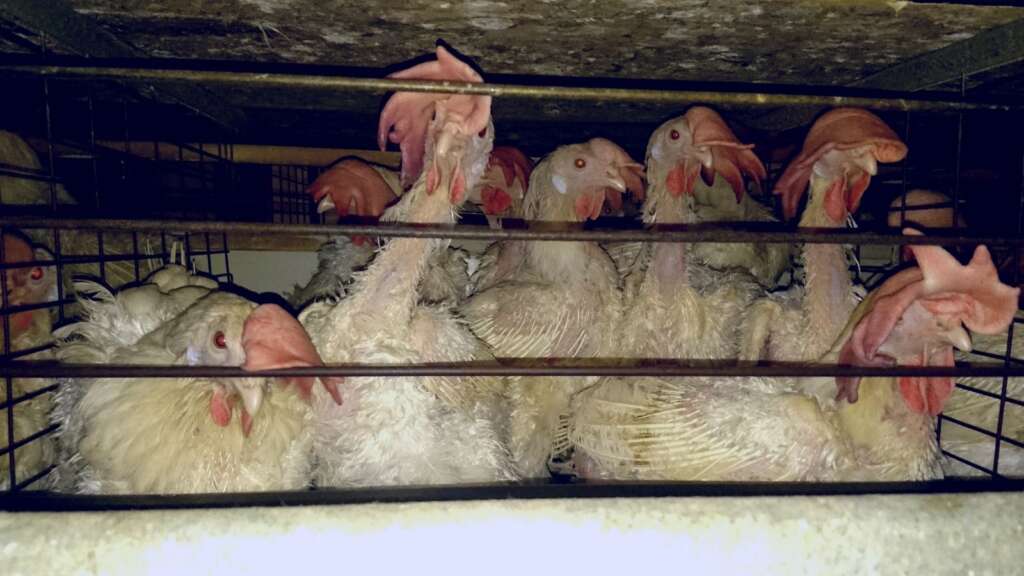
Finally, consumers and companies are advised to reduce the amount of the consumption of eggs; to avoid buying the food containing eggs; to use egg-free mayonnaise; and to get rid of eggs from products. These are examples of relieving chickens from suffering.
Translated by: H. Nakashima



